What are the application scenarios of aquarium light par?
- The Unseen Energy: Understanding Aquarium Light PAR and Its Importance
- Why PAR is the Cornerstone of Thriving Aquatic Life
- Beyond Brightness: The Scientific Foundation of PAR for Aquariums
- Application Scenario 1: Cultivating Vibrant Reef Aquariums
- Optimizing PAR for SPS, LPS, and Soft Corals
- Application Scenario 2: Nurturing Lush Planted Freshwater Aquariums
- Achieving Robust Growth in Aquatic Plant Ecosystems
- Application Scenario 3: Specialized Biotope and Species-Specific Aquariums
- Replicating Natural Habitats with Precision Lighting
- Application Scenario 4: Frag Tanks and Commercial Grow-Out Systems
- Accelerating Growth and Propagation for Commercial Success
- Application Scenario 5: Public Aquariums and Scientific Research Facilities
- Precision Lighting for Education, Conservation, and Discovery
- Choosing Your Ideal Aquarium Light PAR System
- Key Considerations for Intelligent Lighting Investments
- The Future is Bright: Smart PAR Systems and Sustainable Aquarium Keeping
- Embracing Innovation for Enhanced Aquatic Environments
- Conclusion: Illuminating the Path to Aquatic Success with PAR
- Frequently Asked Questions About Aquarium Light PAR
The Unseen Energy: Understanding Aquarium Light PAR and Its Importance
In the mesmerizing world of aquariums, lighting transcends mere aesthetics; it is the very lifeblood for many of the inhabitants within. For dedicated aquarists, understanding and optimizing Photosynthetically Active Radiation (PAR) is paramount. PAR refers to the spectral range of light (400-700 nanometers) that photosynthetic organisms – from corals to aquatic plants – utilize for photosynthesis, the process converting light energy into chemical energy essential for their growth and survival. Unlike lumens or lux, which measure light intensity as perceived by the human eye, PAR directly quantifies the light available for photosynthetic processes, making it the most critical metric for successful aquatic ecosystems. This comprehensive guide will explore the diverse and essential application scenarios of aquarium light par systems, helping you cultivate healthier, more vibrant aquatic environments.
Why PAR is the Cornerstone of Thriving Aquatic Life
Beyond Brightness: The Scientific Foundation of PAR for Aquariums
The significance of PAR in an aquarium cannot be overstated. For many organisms, particularly photosynthetic corals and aquatic plants, the quantity and quality of PAR directly influence their health, growth rates, and coloration. Without adequate PAR, these organisms cannot perform photosynthesis efficiently, leading to stunted growth, bleaching, and ly, decline. The right aquarium light par levels ensure that symbiotic algae (zooxanthellae in corals) and chloroplasts in plants receive the necessary energy, which in turn provides the host organism with vital nutrients. This intricate biological relationship underscores why modern aquarium lighting, especially high-quality LED solutions, focuses heavily on delivering precise and adjustable PAR values.
Application Scenario 1: Cultivating Vibrant Reef Aquariums
Optimizing PAR for SPS, LPS, and Soft Corals
Reef aquariums are perhaps the most demanding environments when it comes to lighting, and this is where aquarium light par systems truly shine. Corals, the living jewels of the ocean, house zooxanthellae, which perform photosynthesis and provide up to 90% of the coral's energy needs. Different types of corals have vastly different PAR requirements:
- Small Polyp Stony (SPS) Corals: Species like Acropora and Montipora are highly light-demanding, thriving in high PAR levels typically ranging from 250-450 PAR at the coral surface. Precise spectral control, often emphasizing blue and royal blue wavelengths, is crucial for their vibrant coloration and skeletal growth.
- Large Polyp Stony (LPS) Corals: Corals such as Euphyllia (frogspawn, hammer) and Acanthastrea generally prefer moderate PAR levels, usually between 100-250 PAR. While still requiring strong lighting, they are more susceptible to bleaching if exposed to excessively high PAR too quickly.
- Soft Corals: Organisms like zoanthids, mushrooms, and leather corals are the most forgiving, flourishing in lower PAR ranges, typically 50-150 PAR. They can often tolerate a wider range of lighting conditions but still benefit from consistent PAR to maintain health and expansion.
For reef aquarists, carefully selected LED aquarium light par fixtures allow for precise control over intensity and spectrum, facilitating optimal coral growth, enhanced coloration, and preventing light shock or starvation. Manufacturers like LQE, with our expertise in high-performance LED technologies for various applications, understand the critical need for reliable, high-output, and precisely controllable light sources, principles that translate across diverse LED lighting needs.
Application Scenario 2: Nurturing Lush Planted Freshwater Aquariums
Achieving Robust Growth in Aquatic Plant Ecosystems
Planted freshwater aquariums, often called aquascapes, rely heavily on effective lighting to support the vigorous growth of aquatic plants. Just like corals, plants use PAR for photosynthesis, converting light into energy for foliage development, root growth, and overall health. The specific PAR levels required vary significantly based on the plant species and the desired growth rate:
- Low-Light Plants: Anubias, Java Fern, and Mosses thrive in PAR levels between 15-30 PAR. These plants are generally slow-growing and require minimal intervention.
- Medium-Light Plants: Cryptocoryne, Swords, and some stem plants perform well in PAR ranges of 30-50 PAR. This range often requires moderate CO2 supplementation and nutrient dosing.
- High-Light Plants: Carpeting plants like Monte Carlo, Dwarf Hairgrass, and many colorful stem plants demand PAR levels from 50-100+ PAR. These setups typically necessitate robust CO2 injection and a comprehensive fertilization regimen to prevent algae growth and nutrient deficiencies.
A well-chosen aquarium light par system for planted tanks provides not only the necessary intensity but also a balanced spectrum, often with peaks in red and blue wavelengths, which are most efficiently absorbed by chlorophyll. This optimized lighting encourages vibrant green foliage, healthy root systems, and prevents issues like leggy growth or nutrient lock-out due to insufficient light. The goal is to create a harmonious balance between light, CO2, and nutrients, mimicking natural aquatic environments for unparalleled plant health.
Application Scenario 3: Specialized Biotope and Species-Specific Aquariums
Replicating Natural Habitats with Precision Lighting
Beyond general reef or planted tanks, aquarium light par plays a crucial role in creating specialized biotope aquariums or tanks dedicated to specific species. The aim here is to mimic the natural lighting conditions of a particular geographical region or depth, which can significantly impact the behavior, breeding, and long-term health of the inhabitants.
- Amazonian Blackwater Tanks: These setups, home to fish like discus and tetras, originate from environments with filtered, tannin-stained waters, implying lower PAR levels and often a warmer, reddish spectrum. Replicating this low-light, diffused environment helps reduce stress and encourages natural behaviors.
- African Rift Lake Cichlid Tanks: Lakes Malawi and Tanganyika are known for their clear, bright waters, often requiring higher PAR levels and a bluer spectrum to simulate their natural, shallow-water habitats.
- Deep-Water Reef Species: Some specialized marine tanks focus on deeper water corals and fish that naturally receive significantly lower PAR and specific blue-dominated spectra.
By carefully selecting an aquarium light par system with adjustable intensity and spectral tuning, aquarists can precisely replicate these diverse natural conditions. This attention to detail promotes natural breeding cycles, enhances species-specific coloration, and ly creates a more authentic and enriching environment for the aquatic inhabitants. The ability to customize light output ensures that even the most unique biotope requirements can be met with precision.
Application Scenario 4: Frag Tanks and Commercial Grow-Out Systems
Accelerating Growth and Propagation for Commercial Success
For commercial growers, hobbyists looking to propagate corals or plants, or research facilities focused on aquaculture, frag tanks and grow-out systems are indispensable. In these specialized setups, the primary goal is accelerated growth and efficient propagation, making precise and often high aquarium light par levels absolutely critical. These systems are designed to maximize the photosynthetic potential of corals or plants, often utilizing dedicated, high-intensity LED fixtures.
Key considerations for frag and grow-out systems include:
- High and Consistent PAR: Often, PAR levels are maintained in the upper range (e.g., 250-500+ PAR for corals, 100-150+ PAR for plants) to stimulate rapid cell division and tissue growth.
- Optimized Spectrum: Specific spectral blends, typically heavy in blue for corals and balanced red/blue for plants, are used to encourage fast growth and desired coloration.
- Even Light Distribution: Ensuring uniform PAR across the entire frag tank prevents shading and promotes consistent growth among all specimens.
- Adjustability and Control: The ability to fine-tune PAR intensity and photoperiod allows growers to adapt to different species' needs and to gradually acclimate new fragments.
The investment in a robust aquarium light par system for these applications directly translates to increased yield, faster turnaround times, and healthier specimens for sale or transfer. This focus on efficiency and performance echoes the high standards LQE maintains in developing professional-grade lighting solutions, where reliability and consistent output are non-negotiable for commercial success.
Application Scenario 5: Public Aquariums and Scientific Research Facilities
Precision Lighting for Education, Conservation, and Discovery
Public aquariums, zoos, and scientific research facilities operate on a scale far beyond the typical home hobbyist. Here, aquarium light par systems are not just about aesthetics but are integral to conservation efforts, educational programs, and cutting-edge scientific research. The stakes are high, requiring commercial-grade reliability, precision, and scalability.
- Replicating Extreme Environments: Public aquariums often house diverse ecosystems, from deep-sea environments to shallow coral reefs. Sophisticated PAR systems are used to accurately replicate these conditions, crucial for the long-term health and breeding of rare and sensitive species.
- Research into Photosynthesis and Growth: Scientists use highly controlled PAR environments to study the effects of light intensity, spectrum, and photoperiod on various aquatic organisms, contributing to our understanding of marine biology and climate change impacts.
- Public Education: Accurate and naturalistic lighting helps create immersive exhibits that educate visitors about the delicate balance of aquatic ecosystems and the importance of light in sustaining life.
These institutions demand not only high-performance aquarium light par systems but also advanced control capabilities, often integrating with large-scale environmental control systems. The ability to program complex light cycles, simulate weather patterns, and fine-tune spectral output is critical. LQE, as a professional OEM/ODM stage lighting equipment manufacturer, understands the rigorous demands of large-scale, high-performance lighting installations. Our commitment to R&D, production quality, and the ability to deliver customized, durable lighting solutions with precise control mechanisms aligns perfectly with the needs of such professional facilities, ensuring long-lasting performance and exceptional value.
Choosing Your Ideal Aquarium Light PAR System
Key Considerations for Intelligent Lighting Investments
Selecting the right aquarium light par system involves more than just picking the brightest light. It requires a thoughtful assessment of several factors to ensure optimal performance and return on investment:
- Tank Size and Depth: Deeper tanks require more powerful fixtures to penetrate the water column and deliver adequate PAR to the bottom.
- Inhabitants' Requirements: Match PAR levels and spectrum to the specific needs of your corals, plants, or fish.
- Budget and Future-Proofing: While higher-quality LED PAR lights may have a higher initial cost, their energy efficiency, longevity, and superior performance often lead to significant long-term savings and better results.
- Control and Adjustability: Look for fixtures with dimming capabilities, programmable timers, and spectral tuning to adapt to evolving needs or specific acclimation protocols.
- Heat Dissipation: Efficient heat management is crucial for the longevity of LED fixtures and to prevent overheating your aquarium water.
Investing in a high-quality, professional aquarium light par system from a reputable manufacturer ensures that you are providing the best possible foundation for your aquatic ecosystem. Just as LQE commits to delivering first-class modern stage lighting equipment with exceptional customer service and cost-effectiveness, the principles of quality, durability, and performance are equally vital in specialized aquarium lighting. Focusing on robust design, advanced LED technology, and precise control will help you realize your vision for a thriving aquatic world.
The Future is Bright: Smart PAR Systems and Sustainable Aquarium Keeping
Embracing Innovation for Enhanced Aquatic Environments
The evolution of aquarium light par technology continues at a rapid pace, driven by advancements in LED efficiency, smart home integration, and a deeper understanding of photobiology. The future of aquarium lighting is increasingly moving towards highly intelligent, customizable, and energy-efficient systems.
- Programmable Schedules and Cloud Control: Modern PAR lights often come with app-based control, allowing users to program daily light cycles, mimic lunar phases, simulate cloud cover, and adjust intensity and spectrum from anywhere.
- Spectral Customization: Advanced fixtures offer multiple LED channels (e.g., cool white, warm white, royal blue, deep red, UV) that can be individually tuned, providing unparalleled control over the light spectrum to cater precisely to specific coral or plant needs.
- Integrated Sensors: Some cutting-edge systems incorporate sensors to monitor aquarium conditions, potentially adjusting light output based on water parameters or temperature.
- Energy Efficiency and Sustainability: As LED technology improves, aquarium light par systems become even more energy-efficient, reducing operational costs and environmental impact, aligning with a broader trend towards sustainable hobby practices.
These innovations empower aquarists with unprecedented control and precision, making it easier than ever to create and maintain stunning, healthy aquatic environments. The commitment to R&D and integrating advanced digital controls, much like LQE's specialization in digital stage lighting, demonstrates a shared vision for harnessing technology to achieve superior lighting performance across diverse applications.
Conclusion: Illuminating the Path to Aquatic Success with PAR
The role of aquarium light par systems is undeniably central to the success of virtually any modern aquarium. From the vibrant ecosystems of reef tanks and lush landscapes of planted freshwater aquariums to the precise requirements of specialized biotopes, commercial propagation, and critical research, understanding and optimizing PAR is the key to unlocking the full potential of your aquatic world. By focusing on appropriate PAR levels, balanced spectra, and reliable, controllable LED technology, aquarists can ensure the health, growth, and breathtaking beauty of their underwater inhabitants. As experts in developing high-quality, long-lasting LED lighting solutions, LQE recognizes the profound impact of well-engineered light on any environment it illuminates, empowering users to realize their vision, whether on a grand stage or within the captivating confines of an aquarium.
Frequently Asked Questions About Aquarium Light PAR
Q: What does PAR stand for in aquarium lighting?PAR stands for Photosynthetically Active Radiation, which measures the amount of light in the spectral range of 400-700 nanometers that photosynthetic organisms (like corals and aquatic plants) use for photosynthesis.
Q: How is PAR different from lumens or watts?Lumens measure the brightness of light as perceived by the human eye, while watts measure the electrical power consumed by a light fixture. Neither directly indicates the amount of light useful for photosynthesis. PAR specifically quantifies the light available for this biological process, making it a more relevant metric for aquariums with photosynthetic life.
Q: Do all aquariums need high PAR levels?No. The optimal PAR level depends entirely on the inhabitants of the aquarium. High-light demanding corals (SPS) and plants (e.g., carpeting plants) need high PAR, while low-light corals (soft corals) and plants (e.g., Anubias) thrive in much lower PAR levels. Providing too much PAR can be detrimental, causing bleaching in corals or excessive algae growth in planted tanks.
Q: How can I measure PAR in my aquarium?PAR can be measured using a specialized PAR meter. These devices typically have a submersible sensor that can be placed at various depths and locations within your aquarium to get accurate readings. Many local fish stores or aquarium clubs offer PAR meter rentals.
Q: What is a good PAR range for a mixed reef tank?For a mixed reef tank (containing a mix of SPS, LPS, and soft corals), a typical PAR range might be 150-300 PAR. However, this depends on the specific placement of corals; SPS corals at the top might need 300-400 PAR, while LPS and soft corals lower down could thrive at 100-200 PAR. It's crucial to acclimate corals gradually to new light intensities.
Q: Can I use regular household LEDs for my aquarium?While regular household LEDs might provide some light, they are generally not designed to provide the specific spectrum and intensity required for photosynthetic aquatic life. They often lack the necessary blue and red wavelengths for coral and plant growth and may not be waterproof or durable enough for aquarium environments. Specialized aquarium light par LED fixtures are engineered for this specific purpose.
Q: What are the risks of too much PAR?Excessive PAR can lead to coral bleaching (where corals expel their symbiotic zooxanthellae due to stress), inhibit growth, or cause burning. In planted tanks, too much PAR without sufficient CO2 and nutrients can lead to aggressive algae blooms, as the algae outcompetes the plants for available resources.
Q: How often should I adjust my PAR levels?Adjustments should be made cautiously. Typically, you'd set your PAR levels when setting up a new tank or introducing new, sensitive inhabitants. Minor adjustments might be needed as corals grow closer to the light or if you notice signs of stress (e.g., bleaching, slow growth). When making changes, do so gradually over days or weeks to allow your aquatic life to acclimate.
Tips for buy spotlight for stage lighting
Best Moving Head Lights for Weddings and Events
Top Moving Head Light Brands Every DJ Should Know
Unveiling the Par Can Light: Your Essential Guide to Stage Illumination
Distributor
Do you offer OEM/ODM support for distributors?
Yes, as a professional OEM/ODM manufacturer, we support brand customization, including logo printing, packaging design, and even custom features based on project needs.
What is your typical lead time for distributor orders?
Our standard production lead time is 15–30 working days depending on order volume and customization requirements. For stocked models or repeat orders, we can offer shorter delivery times.
1000w
Can I Have a Sample Order for an LED DJ Light?
Sure, sample order are welcome to test and check LQE quality. Mixed samples are acceptable.
Does LQE Offer Customized Stage Moving Light Solution?
An experienced R&D team can provide customized digital stage lighting OEM/ODM solution service to meet clients’ unique demands from global markets, such as customized CRI parameter, Ingress protection rating, effect, etc.
What Is the Warranty Offered by LQE Lighting?
LQE lighting offers a comprehensive 1-year warranty and spare parts on its products, giving customers peace of mind and investment protection.
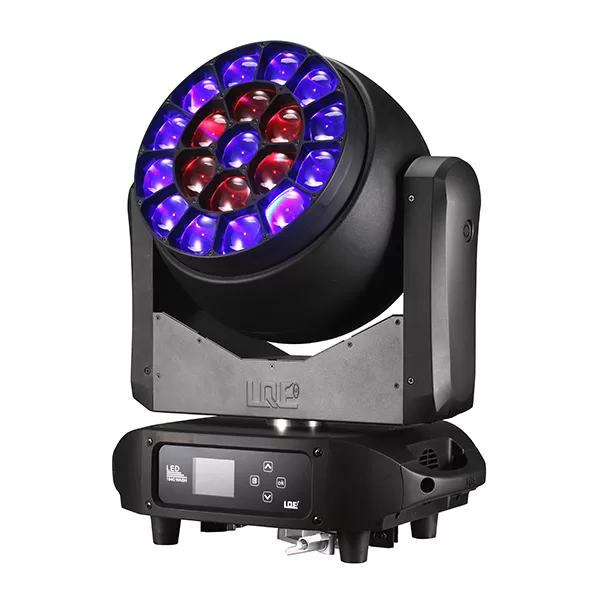
600w 19x40w RGBW Stage Moving Head Wash Light LW600 Zoom IP20
600W 19x40W LED RGBW Mulichips Moving Head Wash Lights with Zoom (5°–50°), Covering Large Range and Long Distance. IP20: Designed to deliver a 5°–50° ultra-large zoom range to achieve a greater wash effect, illuminating stages and events with stunning ring control lighting effects.

LED Moving Head Stage Wash Light LW200Z
The versatile moving head stage light provides a powerful lighting solution for theaters, concerts, and large outdoor performances. Suitable for theaters, TV stations, entertainment stages, and large outdoor performance scenes.
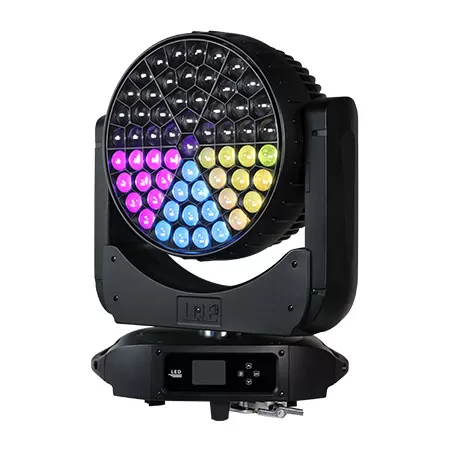
1000w 61x40w RGBW Stage Moving Head Wash Light LW1000
1000W 61x40W LED RGBW Mulichips Moving Head Wash Lights with Zoom (5°–50°), Covering Large Range and Long Distance. Designed to deliver a 5°–50° ultra-large zoom range to achieve a greater wash effect, illuminating stages and events with stunning lighting effects.
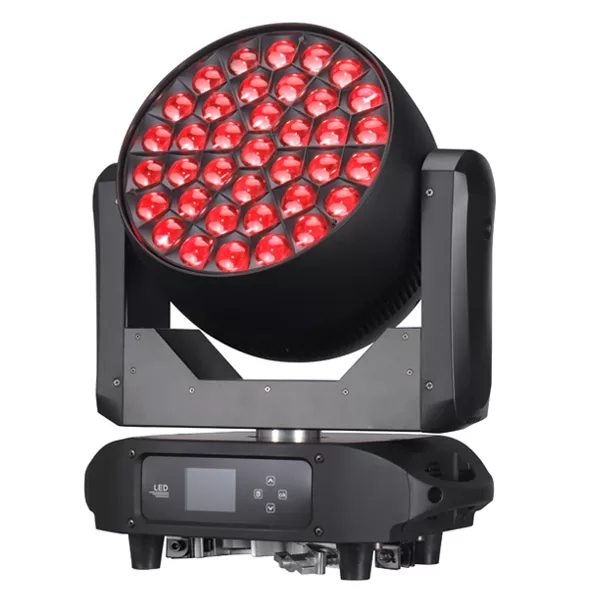
800w 37x40w RGBW Stage Moving Head Wash Light LW800
800W 37x40W LED RGBW Mulichips Moving Head Wash Lights with Zoom (5°-50°), Covering Large Range and Long Distance. Designed to deliver a 5°–50° ultra-large zoom range to achieve a greater wash effect, illuminating stages and events with stunning ring control lighting effects.

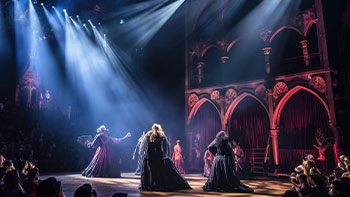
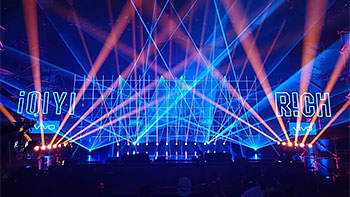
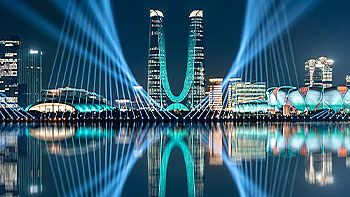
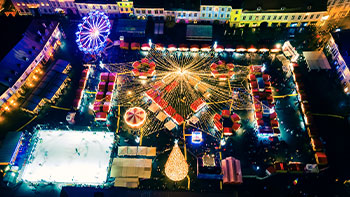
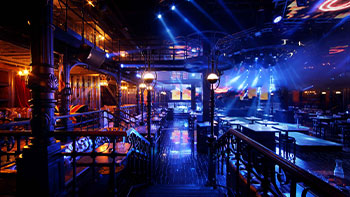
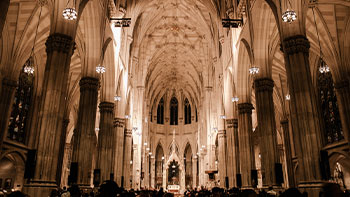






Linkedin
YouTube
Whatsapp: +8618924548390
TikTok